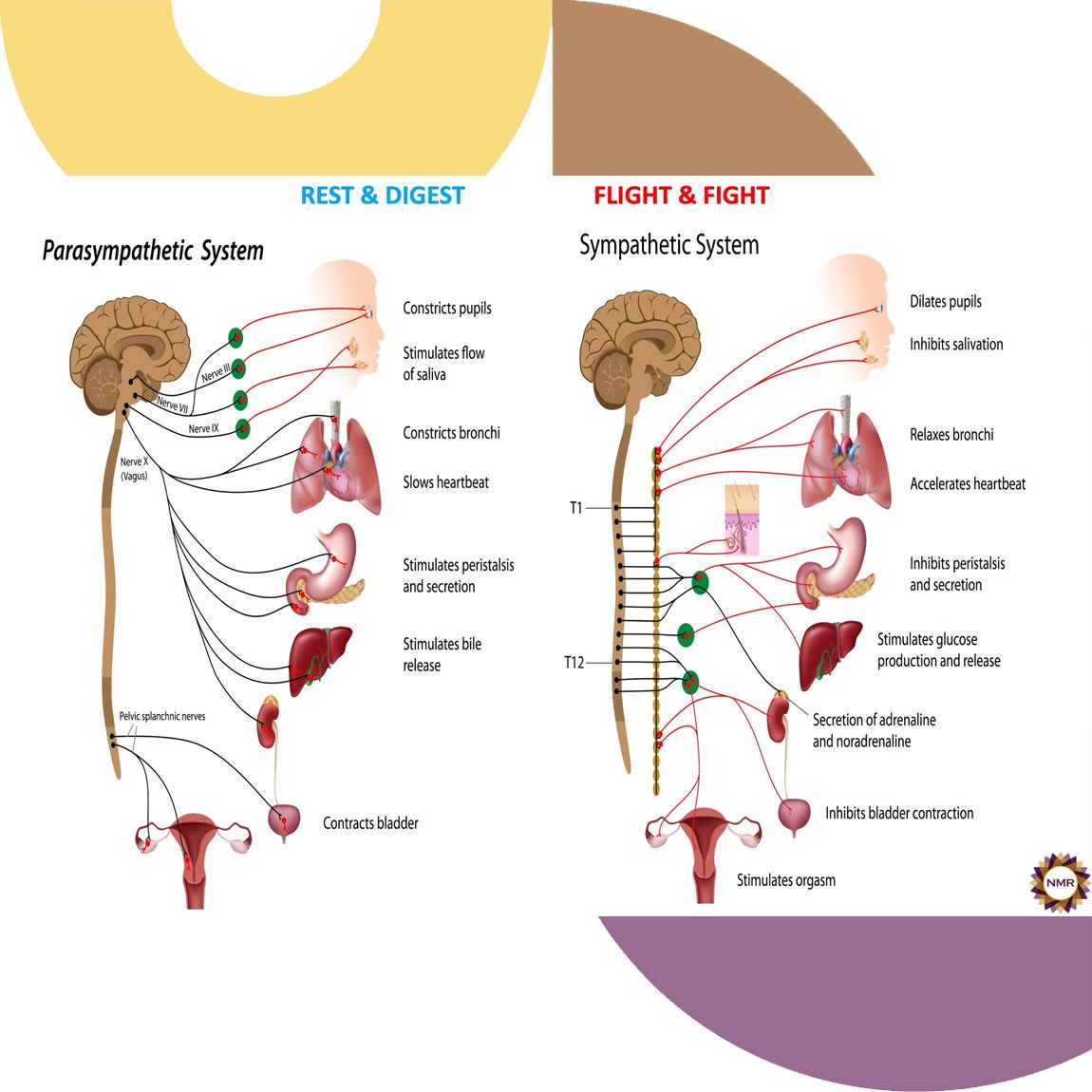
Sympathetic vs Parasympathetic functions of the Autonomic Nervous System
Our nervous system has 2 interweaving sides: excitatory and vegetative. One side takes care of emergencies and the other rest and regeneration.
What the Parasympathetic side of the Autonomic Nervous System does:
- Meditation; enables you to reach states of at oneness.
- Relaxation; the ability to calm the mind.
- Digestion; secretion of enzymes and moving of the bowel.
- Restoration; The efficiency and priorities of our body’s cellular metabolism are directly affected by whether we are at ease or anxious.
- Sleep; the ability to access the deep sleep states of youth.
- Cell regeneration; all the metabolic chemistry that is used in healing and making new tissue.
What the Sympathetic nervous system does:
- Constricts blood vessels; raises blood pressure
- Shortens breath and limits it to the chest muscles
- Contracts pupils and produces focused “tunnel vision”
- Reverts us to reactive responses based on past experience.
- Inhibits higher brain functions (conceptual, integrative and problem solving creativity)
- Suppresses immune response
- Disintegrates learned, refined movements
- Produces physical awkwardness resulting in loss of self esteem.
- Difficulty concentrating
- Difficulty falling or staying asleep
Chronic Stress creates Sympathetic Hyperarousal or Hypervigilance.
Muscles are tight constantly in an overall hypertension ready for the need to fight flight or freeze, always “at the ready,”
Areas expressive of the “the startle reflex” such as the back of the neck and shoulders, sub-occipitals, eyes, low back, calf and ankle muscles, psoas and iliacus maintain the most tension.
The end result:
- Chronic tension and pain in muscles, especially those expressive of the startle reflex.
- High levels of stress hormones and tension over time create high fluid levels in the tissue.
- Stiff, sore muscles, poor circulation, taut, pale and thick skin.
- High fluid levels produce poor cellular nutrition, sluggish energy metabolism, poor recovery time from
